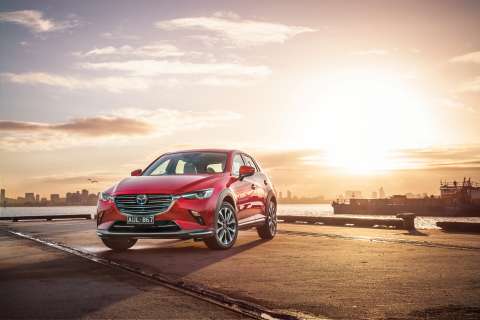Ian Crawford tests the 2018 Mazda CX-3 with pricing, specs, ride and handling, safety, verdict and everything the over-50 driver needs to know.
Summary: The small Mazda SUV outsells everything in its class, and the new one has been improved to protect its leadership position, including a new 5-year warranty.
2018 Mazda CX-3
[Launch review]
Mazda’s hot-selling CX-3 small SUV has been upgraded for the second time since its 2015 Australian launch and the result is a great little car made even better.
The classy Japanese brand has just launched a significant 2018 upgrade for their baby SUV and it’s sure to make life more difficult for the more than 20 brands that offer their wares as competition.
The rise and rise of the segment in recent years has been spectacular.
Consider these VFACTS figures: Last year, to the end of July, Australian dealers found homes for 64,991 small SUVs (not least with downsizing over-50s). For the same period this year, the figure was 82,156 – a jump of 26.4 per cent – and in fact, small, under-$40,000 SUV sales have more than doubled in the past five years.
No wonder every man and his dog want part of the action.
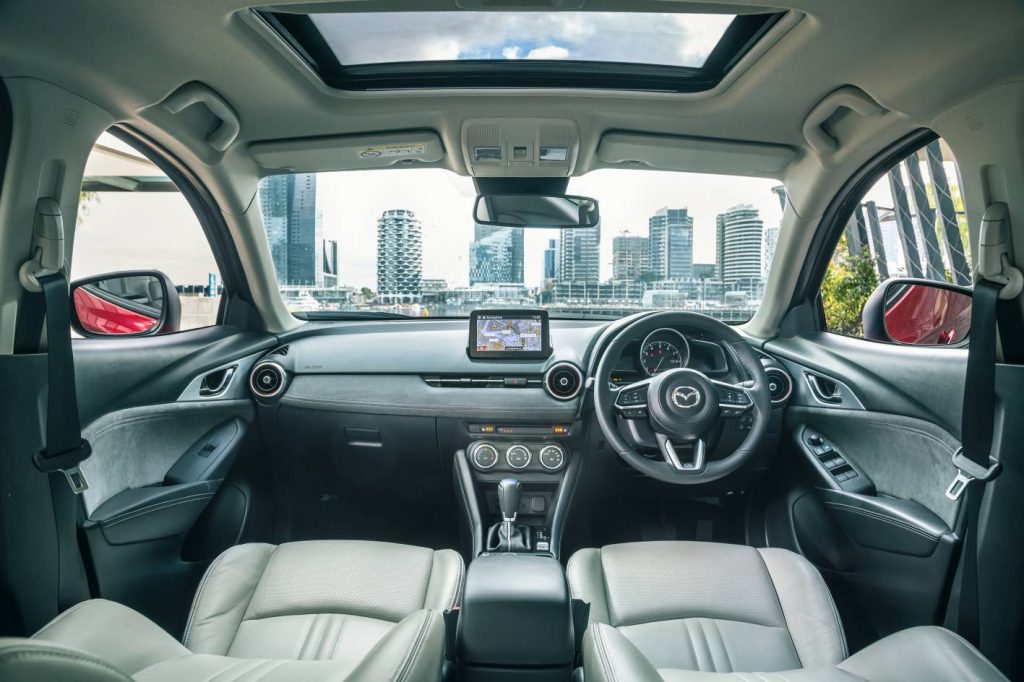
Since the car’s 2015 arrival, Mazda dealers have found homes for more than 58,000 CX-3s and for the month of July this year, the CX-3 topped the sales charts with 1233 units, followed by Nissan’s Qashqai with 1205 and the Mitsubishi ASX on 1154. These small SUVs really appeal to senior drivers, with good visibility, easier access and reasonable luggage space.
For 2018, Mazda has blessed the new CX-3 with upgraded technology, more standard safety kit, more-powerful engines and exterior and interior styling tweaks.
Both the manual gearbox and torque-converted automatic are six-speeders.
In all there are four grades – Neo Sport, Maxx Sport, sTouring and Akari.
For this launch test we’ve focussed on the front-wheel-drive petrol Maxx Sport.
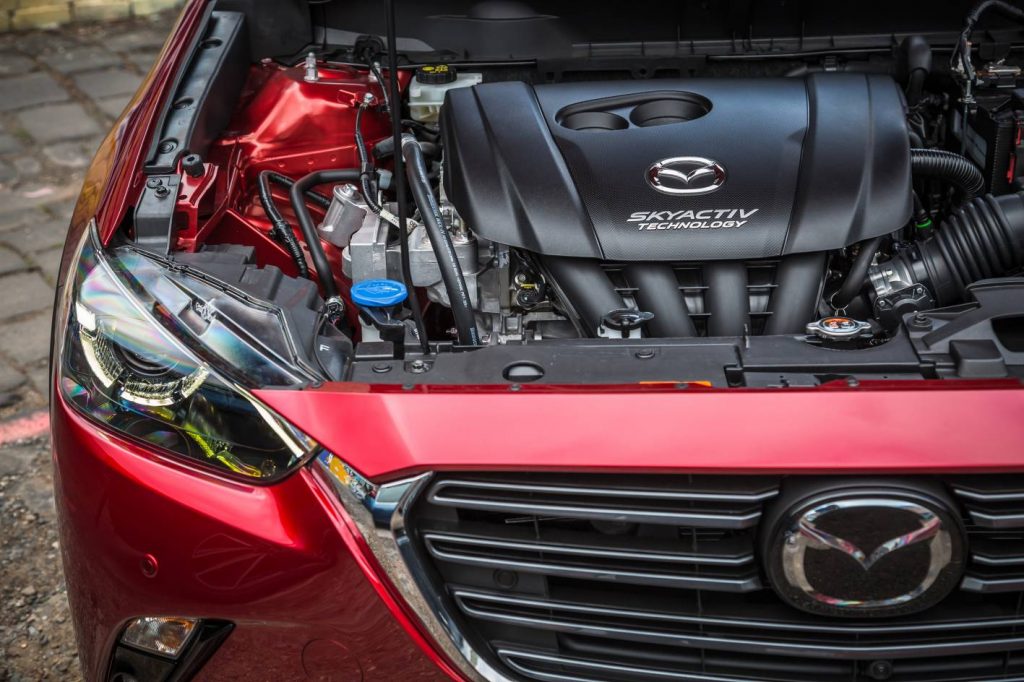
More inclusions. And some useful tweaks.
New across-the-range features include a reversing camera (always worthwhile when swivelling the head becomes more difficult) and an electric parking brake.
The popular four-cylinder naturally-aspirated petrol engine has had its Skyactiv technologies tweaked to improve fuel economy and throttle response. (Mazda uses all caps for the Skyactiv name so we don’t know if it should have a cap “A”; we’ve decided to go lower case all through.)
It now boasts 111kW of maximum power (up from 110kW) at 6000rpm and its new 195Nm torque figure at 2800rpm is up by 3Nm.
Mazda claims a combined-fuel-consumption figure of 6.6L/100km for the FWD manual (6.3 L/100km with automatic) and 6.7 L/100km for the AWD automatic.
Over the excellent and varied media-launch drive program of well over 200kms, my co-driver and I saw 7.8 L/100km.
Gone is the old 1.5-litre turbo-diesel and it’s been replaced by an all-new 1.8-litre unit with the result that power has gone from 77kW to 85kW (at 4000rpm). Peak torque of 270Nm between 1600 and 2600rpm remains unchanged.
Buy yourself a front-wheel-drive diesel and you’re looking at a miserly 4.7 L/100km consumption figure. The six-speed automatic raises this to 5.1 L/100km.
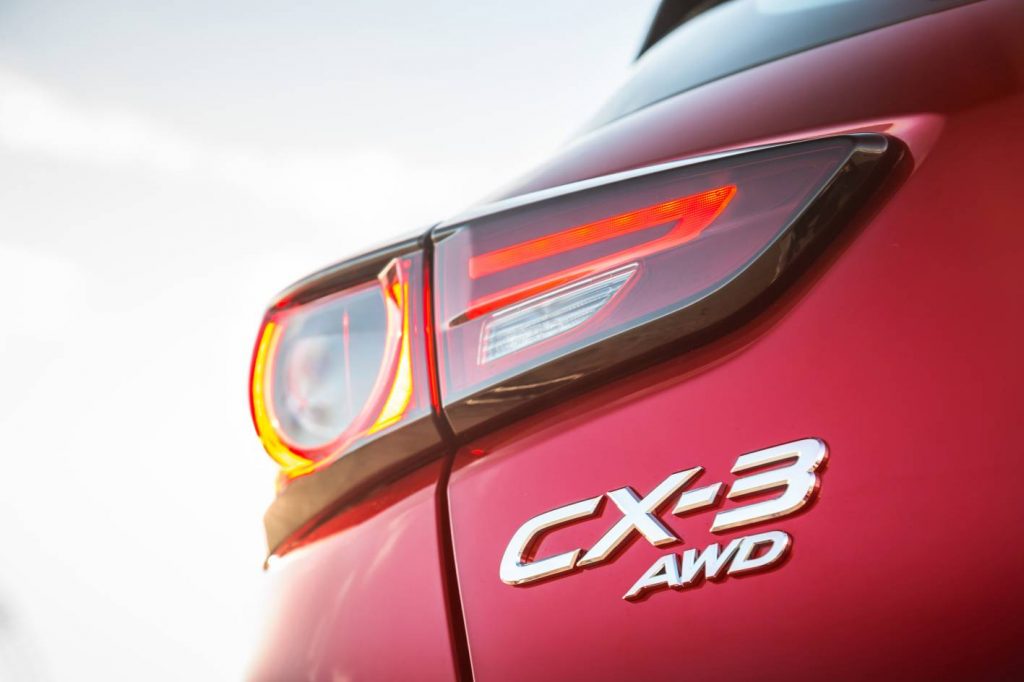
Subtle exterior and interior changes.
The just-released upgrade sees subtle exterior changes such as a new grille and new gloss-black fog-light bezels and side pillar.
There are equally subtle interior changes to the dash area.
The amount of hard plastic in the CX-3’s interior continues to diminish somewhat the overall classiness of the otherwise excellent interior.
In terms of its not-insubstantial standard-kit inventory, Maxx Sport buyers can look forward to goodies such as Bluetooth phone and audio connectivity, Internet radio integration for Stitcher and Aha (ask someone under 30!), advanced keyless push-button engine starting, automatic headlights and climate-control “air.”
Also on the menu is leather wrapping for the steering wheel and gear-shift knob, satellite navigation, an electric parking brake with auto hold, Mazda’s MZD Connect seven-inch full-colour touch-screen, rear parking sensors, a reversing camera and rain-sensing wipers.
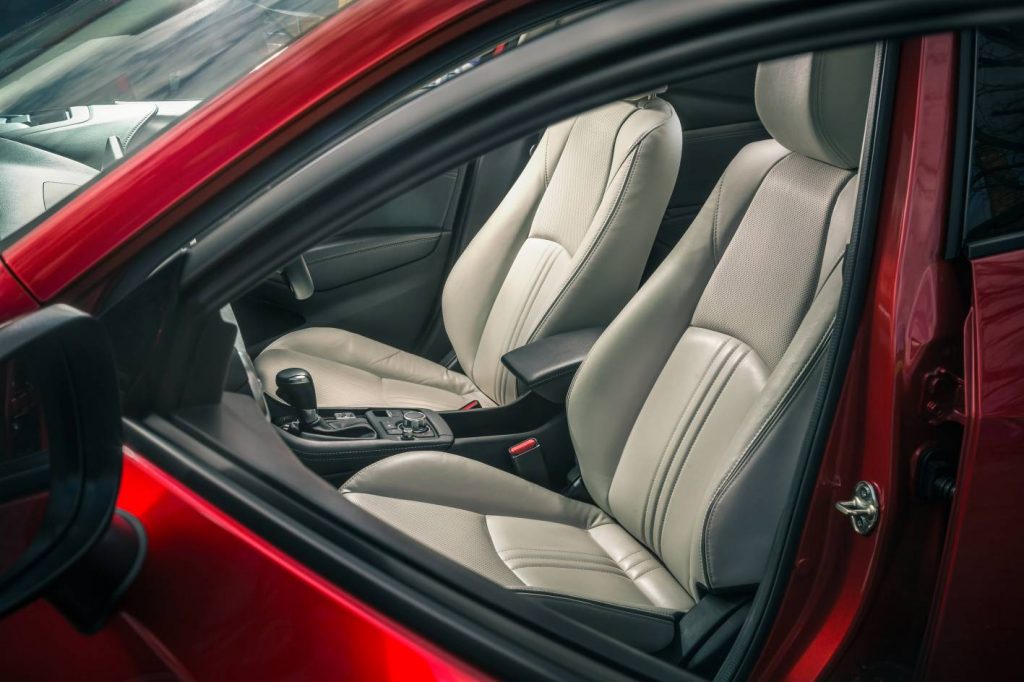
And more safety equipment as standard.
One of the CX-3’s great buyer attractions has always been its safety credentials and they have been enhanced with each upgrade.
The new model is blessed with ABS brakes, front driver-and-passenger airbags, front-side airbags and front-and-rear curtain airbags, dynamic stability control, traction control, an emergency-stop signal, hill-launch assist. Childproof rear door locks, emergency brake-force distribution and emergency brake-assist are also worthwhile inclusions.
You also get rear cross-traffic alert, forward-and-reverse smart-city brake support, hill launch-assist, ISOFIX child-restraint anchor points as well as whiplash-minimising front seats.
Driveaway pricing kicks off for the four-variant range at $23,990 for the two-litre petrol front-wheel-drive Neo Sport manual and tops out at $40,490 for the range-topping 1.8-litre diesel all-wheel-drive Akari automatic.
As with the outgoing model, Maxx Sport is expected to be the hottest seller on 55 percent, followed by the sTouring with 25 percent, the Akari on 13 percent and the Neo Sport just seven percent.
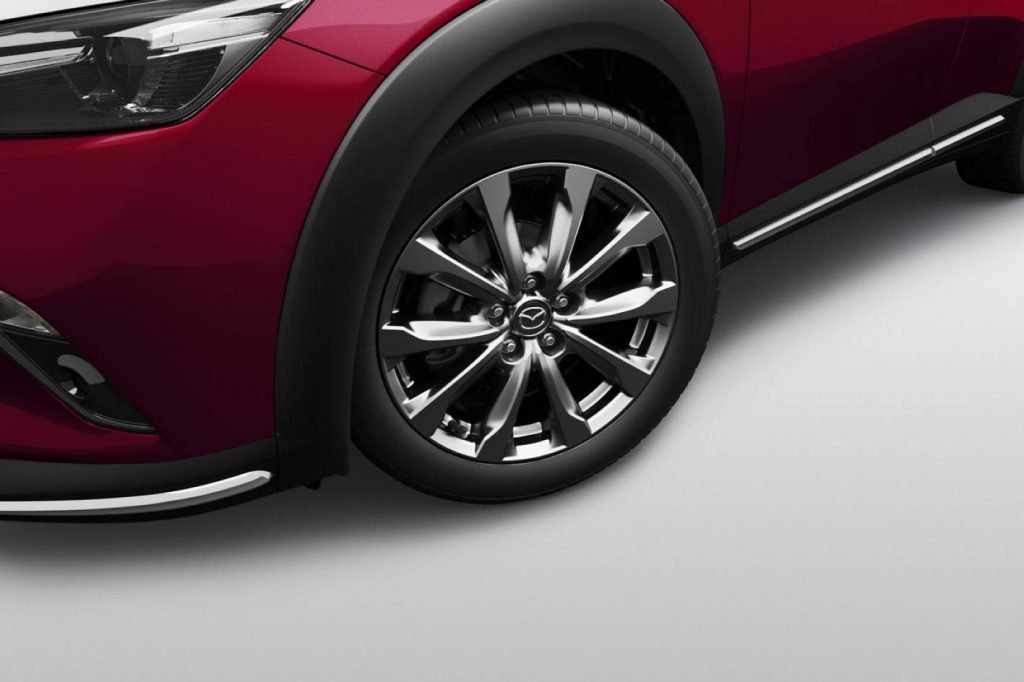
Strong buyer preference for FWD, petrol and auto.
Mazda predicts 92 percent of total CX-3 sales will be for front-wheel drivers with a whopping 99 percent of buyers opting for the petrol engine and 90 percent plonking down an extra $2000 for automatic versions.
More hatch-like than SUV-like.
Behind the wheel of the new CX-3 is, not surprisingly, pretty much the same as its predecessor.
That is, you feel more like you’re driving a small hatch-back than an SUV, but that said, the work Mazda’s engineers have put into the new model’s steering, handling and ride comfort has certainly paid off.
The cloth-trimmed seats in the Maxx Sport are well shaped and supportive and as before, height and reach-adjustment for the leather-wrapped steering wheel, combined with adequate manual seat adjustment, means you can quickly create the perfect driving position.
Fire up the newly tweaked twin-cam, 16-valve “four” and you notice that things are a bit quieter in the cabin.
This is because Mazda engineers have continued to improve the isolation of engine and road noise from the cabin — something that the original 2015 model badly needed.
The test car’s engine was mated with Mazda’s excellent six-speed automatic transmission and while you can play with manual gear-shifting using the console-mounted stick shifter, paddles would be nice.
The national media-launch drive program kicked off from Melbourne’s Tullamarine airport and headed “via the Cape” to the striking Mitchelton winery at Nagambie in Victoria’s beautiful Goulburn Valley.
While there was no gravel, we did encounter just about every variation of bitumen surface there is from freeways to narrow, winding country roads.
Even pushed hard, the Maxx Sport sits nice and flat without the slightest hint of body roll.
Turn-in is precise, the steering beautifully weighted and while, like all Mazda vehicles, the ride is on the sporty side, it’s not too firm.
While there was still a fair bit of road noise coming into the cabin on a couple of very coarse bitumen sections, you really can notice the improvement in the car’s noise, vibration and harshness performance.
While my media co-driver and I spent most of the day in the Maxx Sport with its 16-inch wheels and tyres, we also drove the top-spec Akari with its 18s and it was noticeable noisier on the coarse stuff than its sibling.
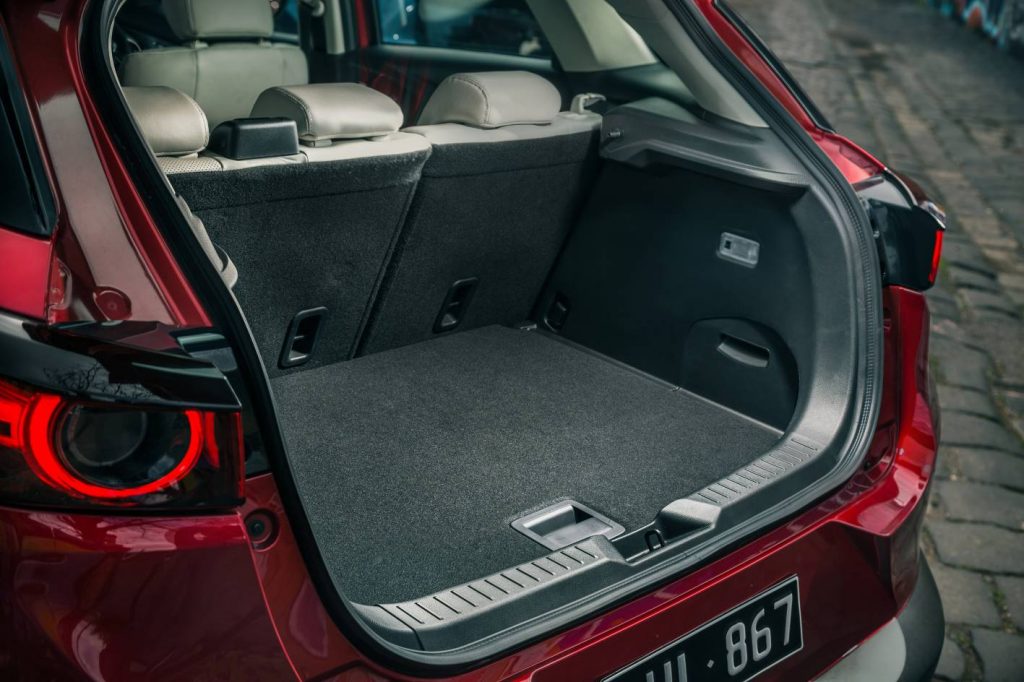
Luggage space is at a premium.
In terms of the cabin and its various storage options, with the rear seats occupied, there’s still just 264 litres of cargo space – well down on the likes of some of the competition, such as the Mitsubishi ASX with 393 litres and Honda’s HR-V with an impressive 437 litres. If you want to carry golf clubs, prams or other cumbersome luggage, this will be a real consideration, so check that you can fit what you need to carry.
Drop the CX-3’s rear seat-backs down and the space rises to a respectable 1174 litres.
There is a fair-sized glove box, various bins on the centre console, a roof-mounted sunglasses holder, front-and-rear cup holders, a map pocket behind the front-passenger’s seat and four door pockets.
For the front-seat passengers, there’s a good amount of legroom but with the front seats right back to accommodate tall people, the rear legroom and “ceiling” height would certainly be uncomfortable for seven-foot basketballers.
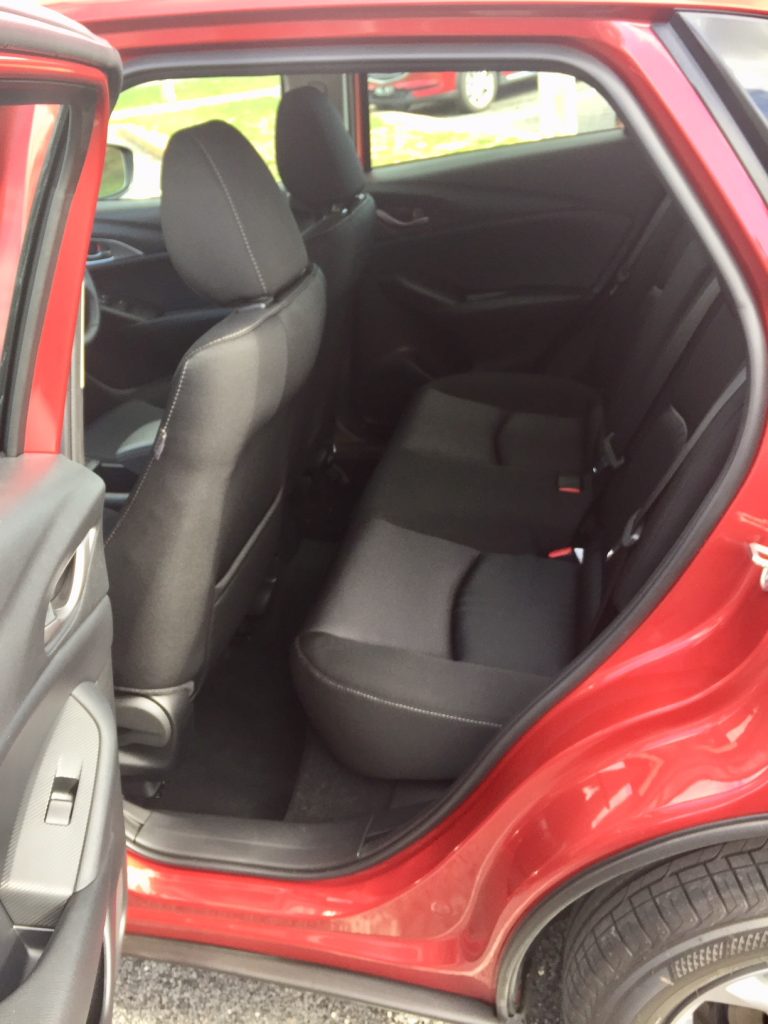
Plenty to like, and some things not so much.
As with all new cars, there are things we motoring scribes like and things we don’t like so much.
So far as the former category is concerned, I like the CX-3 Maxx Sport’s excellent on-road poise, its class-leading safety credentials and its overall value-for-money statement.
The negatives include the space-saver spare, limited rear-seat and cargo space, hard interior plastics and no steering-wheel paddles.
Summary.
Although it’s just three years since the CX-3’s arrival in Australia, Mazda continues to do a great deal of work on its improvement.
To the company’s credit, it has listened to criticism about high levels of cabin road, engine and wind noise and done plenty about it with each of the two subsequent upgrades.
Mazda’s Australian management has also listened to criticism about dragging its feet (or wheels) with a stingy three-year warranty.
They put the business case to their Japanese head-office masters and the new five-year unlimited kilometre version gives Australian customers the only such warranty in the Mazda world.
While at the car’s original launch back in 2015, it was as safe as anything in the segment, it is now the best around in the safety stakes.
While the car does cruise remarkably well out on the highway, it is, as Mazda Australia boss Vinesh Bhindi says, “the ultimate inner-city car.”

